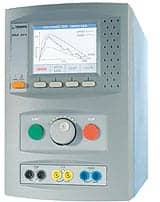The FDA has notified health care and industry professionals about the “serious clinical consequences” that can arise from using programmable syringe pumps to infuse therapies at low rates. To help protect particularly vulnerable patients from potential treatment delays or over- or under-infusion, the agency has requested that manufacturers include new information and warnings in their instructions for use. And it has released a series of recommendations for healthcare professionals to follow when using such devices.
In a safety communication issued last week, the FDA warned that programmable syringe pumps?a type of infusion pump used to deliver highly concentrated medications, nutritional liquids, and blood or blood products to infants and critically ill patients?may deliver these therapies at inconsistent rates, potentially causing serious adverse events such as hemodynamic instability, loss of sedation, and increased pain indicators in critically ill neonates.
According to the agency, over the last three years it has received more than 300 medical device reports (MDRs) associated with the use of programmable syringe pumps, most of which were operating at a rate of less than 5 mL per hour, “and especially flow rates less than 0.5 mL per hour.”
After analyzing the MDRs, talking with clinicians and engineers, and reviewing the published literature, the FDA determined that these issues were not tied to a specific manufacturer or model. “The FDA believes that these concerns may extend to all programmable syringe pumps while infusing at low rates,” the agency wrote.
Despite the potential danger, the FDA concluded that, based on available evidence, “the overall benefits of programmable syringe pumps outweigh their risks.” As a result, the FDA has advised clinicians to carefully consider the syringes and accessory devices, such as tubing and filters, used with these pumps to help minimize the risk of inconsistent flow.
The agency is also requesting that manufacturers of syringe pumps make labeling changes to address these patient safety concerns. In a labeling change request, the FDA called for manufacturers to review their instructions for use and training materials to ensure they include specific precautions and warnings. If they do not contain this information, the agency has suggested language that can be used without needing to submit a new 510(k).
Manufacturers who “plan to deviate from the suggested language” have the opportunity to receive FDA feedback prior to implementation and submission of a new 510(k) or an amendment to an existing 510(k).
“We applaud any action that helps improve infusion therapy safety for both patients and clinicians,” says Marilyn Neder Flack, senior vice president of patient safety initiatives and executive director of the AAMI Foundation. “This safety communication from the FDA is particularly actionable and provides practical guidance that both healthcare professionals and manufacturers can use to keep patients safe.”
The AAMI Foundation launched the National Coalition for Infusion Therapy Safety in 2013 to address ongoing patient safety issues with smart infusion pumps. The coalition focuses on improving drug library compliance, reducing nonactionable pump alarms, and promoting multiple-line education.





